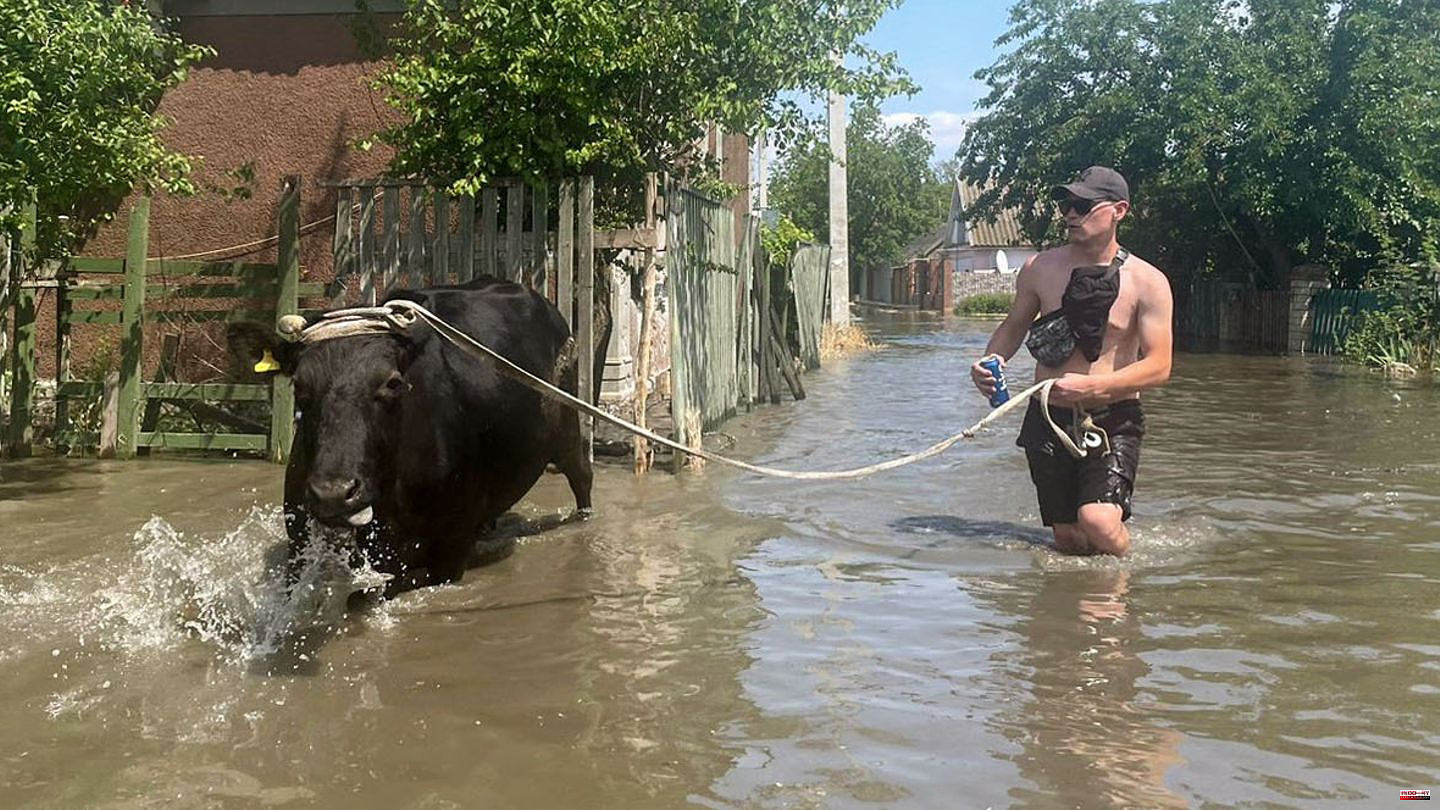On Tuesday, the Kakhovka Dam in the Russian-held part of Ukraine was destroyed. Since then, masses of water have been pushing out of the reservoir and flooding the surrounding area. Russia and Ukraine blame each other, both sides speak of a "terrorist attack" and an unprecedented environmental catastrophe. The allegations cannot be independently verified at this time. What is already known, however, is that the incident has far-reaching consequences for the region – and beyond.
Ukrainian Prime Minister Denys Schmyhal has accused Russia of "ecocide" and "crimes against humanity". Russia has "triggered one of the worst environmental disasters in recent decades," said Schmyhal on Wednesday via video link from Ukraine at an OECD ministerial meeting in Paris. In dozens of villages and towns, problems with the drinking water supply and with the irrigation of the fields are to be feared, he said. "This threatens global food security."
According to initial estimates, the Ukrainian Ministry of Agriculture expects around 10,000 hectares of agricultural land to be flooded on the northern bank of the Dnipro in the Cherson region. On the southern bank, in the Russian-occupied area, a multiple of this area will be flooded, the ministry announced on its website on Tuesday evening.
"In the flooded areas, the grain is lost for this year," says Joachim Müller, head of the Department of Agricultural Engineering in the Tropics and Subtropics at the University of Hohenheim. "The barley would have been harvested at the end of June, the wheat in July. Even if the plants survive the flooding, the soil is too wet to be harvested with machines."
The agricultural expert considers oil and other pollutants, which are dangerous for people and the environment, to be more problematic.
However, Müller sees the biggest problem in the drying up of the North Crimean Canal, which plays a major role in irrigating large areas of cultivation. "This year's harvest is due in a few weeks and can probably be brought in there without major losses," said Müller. However, he believes that a grain harvest with normal yields will only be possible in the coming year if the canal has enough water again in good time. He is not yet able to estimate how large the harvest losses could be. "Reliable statements are only possible after a more detailed analysis, with knowledge of the harvest time, irrigation plan, cultivation area and other factors," says Müller.
The Food and Agriculture Organization (WFP) even warns of the devastating consequences for starving people worldwide. "The massive flooding is destroying newly planted grain and with it the hope for 345 million starving people around the world, for whom the grain from Ukraine is a lifesaver," said Martin Frick, head of the Berlin WFP office of the German Press Agency on Wednesday . Frick emphasized: "World market prices for food are still at a ten-year high." The destruction of the dam should not result in any further price explosions. "We can't afford any more suffering."
UN Emergency Relief Coordinator Martin Griffiths has warned of the consequences of the partial destruction of the Kachowka Dam for the people in the country. "Today's news means that the plight of the people of Ukraine will only get worse," Griffiths said at an emergency meeting of the UN Security Council on Tuesday (local time).
The partial destruction will have "serious and far-reaching consequences for thousands of people on both sides of the front in southern Ukraine through the loss of homes, food, clean water and livelihoods," the UN emergency relief coordinator continued. It is also a "massive blow" to food production in the region and poses a significant risk of mines and explosives penetrating the water into areas previously considered safe. It is also a "massive blow" to food production in the region and poses a significant risk of mines and explosives penetrating the water into areas previously considered safe.












